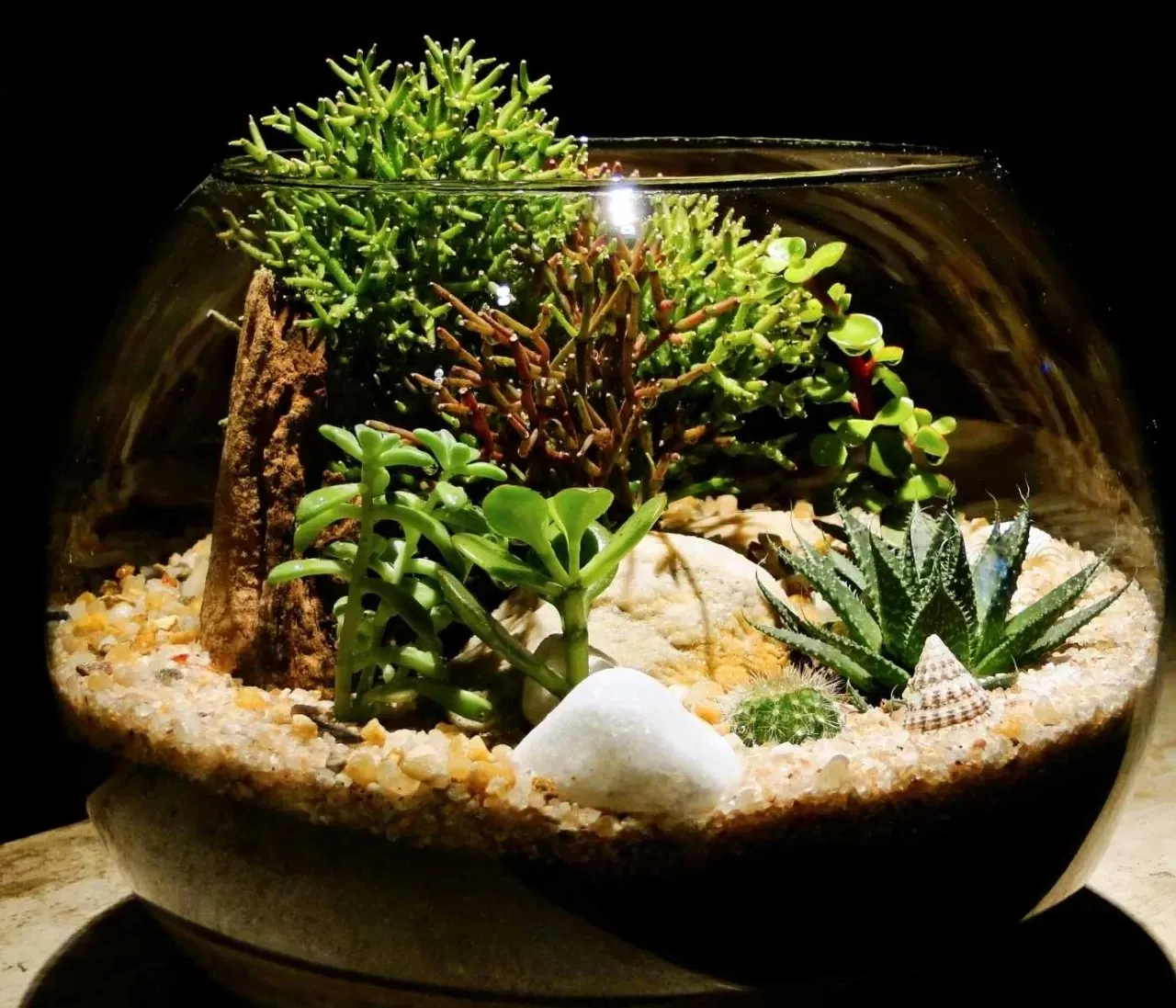Choosing the Best Tarantula Enclosure
Choosing the right tarantula enclosure is crucial for the health and well-being of your pet. A well-suited enclosure provides a safe, comfortable, and stimulating environment, allowing your tarantula to thrive. This comprehensive guide will walk you through the essential factors to consider when selecting the perfect habitat for your eight-legged friend. From size and materials to ventilation and substrate, we’ll cover everything you need to know to create an ideal living space. Selecting the proper enclosure helps ensure your tarantula has the necessary space to live, hunt, and thrive. In addition, a good enclosure setup helps maintain the appropriate temperature and humidity levels, essential for the spider’s survival and molting cycles.
Enclosure Size Guide for Tarantulas
The size of your tarantula’s enclosure is one of the most critical considerations. Providing adequate space allows your tarantula to move freely, hunt comfortably, and avoid stress. An enclosure that is too small can lead to behavioral problems, while an enclosure that is too large can make it difficult for the tarantula to find food and feel secure. The ideal size depends on the species and the size of your tarantula, so it is essential to consider your pet’s specific needs. Consider the adult size when purchasing a juvenile tarantula to prevent needing to upgrade the enclosure in the future.
Understanding Tarantula Species
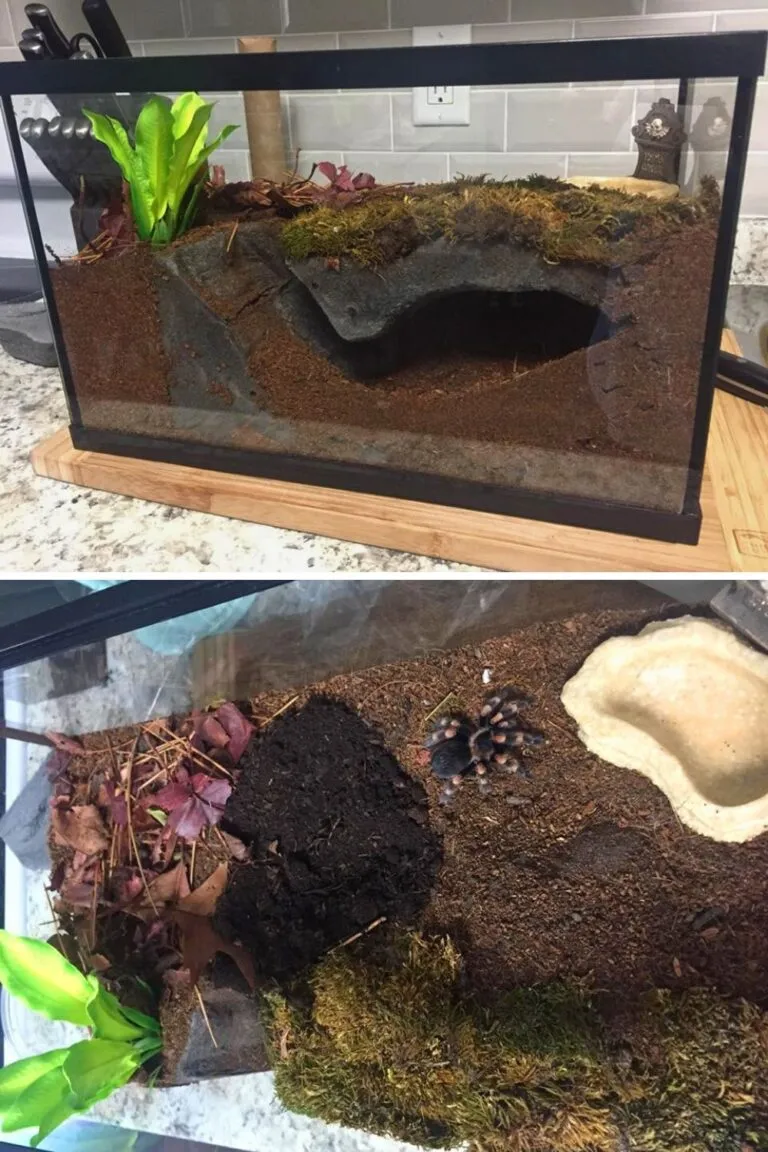
Different tarantula species have varying needs when it comes to enclosure size. Some species are terrestrial and spend most of their time on the ground, while others are arboreal and prefer to climb. Terrestrial tarantulas typically require more floor space, while arboreal species need more vertical space for climbing. Researching the specific requirements of your tarantula species is essential to provide the appropriate habitat. Species like the Chilean Rose Hair tarantula are terrestrial and need more floor space, while species like the Pinktoe tarantula prefer vertical space to climb and hide in branches.
Adult Tarantula Enclosure Size
As a general guideline, adult terrestrial tarantulas should have an enclosure that is at least two to three times their leg span in width and length. For arboreal species, the height of the enclosure should be at least three times their leg span. For example, if your tarantula has a leg span of 6 inches, the enclosure should be at least 12-18 inches wide and long for terrestrial species, and at least 18 inches tall for arboreal species. Larger tarantulas may require even larger enclosures to ensure they have plenty of space.
Juvenile Tarantula Enclosure Size
Juvenile tarantulas require smaller enclosures than adults. A smaller enclosure provides a sense of security and makes it easier for them to find food. As your tarantula grows, you will need to upgrade the enclosure to a larger size. Starting with a smaller enclosure for a juvenile is recommended to prevent the tarantula from feeling overwhelmed in a large space. A good rule of thumb is to provide an enclosure that is roughly three times the tarantula’s leg span in width and length for terrestrial species, and three times the leg span in height for arboreal species. Regularly monitor your tarantula’s growth and upgrade the enclosure as needed.
Enclosure Materials

The materials used to construct the enclosure play a significant role in maintaining the appropriate environment for your tarantula. The material should be durable, easy to clean, and provide good visibility. There are several options available, each with its pros and cons. It is essential to choose a material that is safe for your tarantula and suitable for its specific needs. Consider the material’s ability to retain heat and humidity, as well as its resistance to damage from the tarantula’s claws and fangs.
Glass Enclosures
Glass enclosures are a popular choice for tarantulas because they offer excellent visibility, allowing you to easily observe your pet. They are also easy to clean and maintain. Glass enclosures often have a high-quality aesthetic appeal. However, glass can be heavier than other materials and may require careful handling to prevent breakage. They also provide less insulation than acrylic, potentially leading to fluctuations in temperature and humidity. The cost of glass enclosures can vary depending on the size and features, but they generally provide good value and durability for tarantula keeping.
Acrylic Enclosures
Acrylic enclosures are another excellent option, offering superior clarity and insulation compared to glass. They are also lighter and more impact-resistant, making them a safer choice. Acrylic enclosures are often available in various sizes and styles, providing versatility for different species. However, acrylic is prone to scratching, so be careful when cleaning the enclosure. The higher insulating properties of acrylic can help stabilize temperature and humidity levels. They are a bit more expensive than glass, but their benefits, such as better insulation and lighter weight, often justify the cost.
Plastic Enclosures

Plastic enclosures are a budget-friendly option for tarantulas, often made from materials such as polypropylene or PVC. They are lightweight, durable, and easy to clean. While they may not offer the same level of clarity as glass or acrylic, they provide adequate visibility. Plastic enclosures are available in a range of sizes, and can be an ideal choice for beginners. Some plastic enclosures may require modifications for ventilation, so it’s essential to ensure proper airflow. They also tend to be the most affordable enclosure choice, making them an accessible option for new tarantula keepers.
Ventilation and Airflow
Proper ventilation is essential for the health of your tarantula. Good airflow prevents the buildup of harmful mold and bacteria, ensuring your pet can breathe comfortably. Without adequate ventilation, humidity can build up, leading to respiratory problems and other health issues. A well-ventilated enclosure helps maintain optimal conditions, creating a healthier environment for your tarantula. The type of ventilation required will depend on the species and the overall setup of the enclosure.
Importance of Ventilation
Ventilation plays a vital role in regulating humidity levels and preventing the growth of mold and mildew within the enclosure. Tarantulas thrive in specific humidity ranges, and excessive humidity can be detrimental to their health. Good ventilation promotes the exchange of fresh air, reducing the risk of respiratory infections. Ventilation is crucial in managing humidity. It also aids in temperature regulation, preventing the enclosure from becoming too hot or stuffy. Proper ventilation mimics the natural environment of the tarantula.
Types of Ventilation Systems
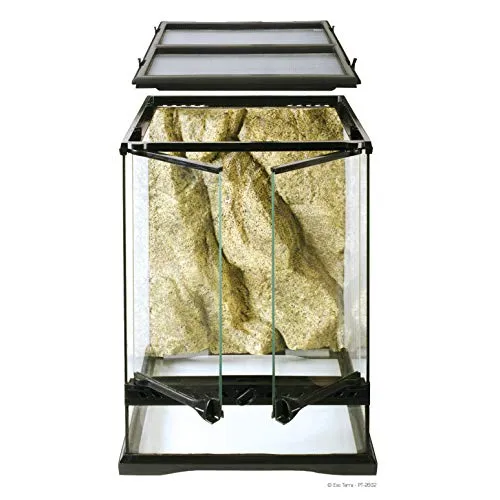
Most tarantula enclosures have ventilation holes or mesh screens to allow for airflow. The most common ventilation setups include top and side ventilation. Top ventilation typically involves a mesh screen on the lid, while side ventilation involves vents along the sides of the enclosure. The best setup will depend on the species and humidity needs. Cross-ventilation, where air enters on one side and exits on the other, is often the most effective. Ensure that the ventilation system is designed to prevent the tarantula from escaping.
Substrate Selection
The substrate is the material that covers the bottom of your tarantula’s enclosure. It serves multiple functions, including providing a comfortable surface for your tarantula to walk on, helping to maintain humidity levels, and allowing the tarantula to burrow. The right substrate is essential for your tarantula’s well-being. The choice of substrate will depend on the species of tarantula, its natural habitat, and your personal preferences. Consider factors like moisture retention, ease of cleaning, and safety when choosing the substrate.
Substrate Types
There are several types of substrate available for tarantulas. The most common options include coconut fiber (coco coir), peat moss, vermiculite, and potting soil. Coco coir is a popular choice because it holds moisture well, resists mold, and is readily available. Peat moss is another good option, but it tends to be more acidic. Vermiculite is excellent for maintaining humidity, and potting soil can be used but should be free of fertilizers and pesticides. Mixes of different substrates can be used. The substrate’s purpose is to help the tarantula feel secure. It’s also the place where they dig and create burrows.
Substrate Depth Considerations
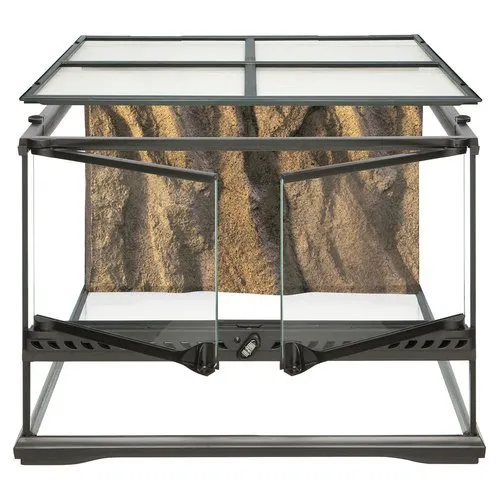
The depth of the substrate should vary depending on the species and the size of your tarantula. Terrestrial species that burrow require a deeper substrate layer than arboreal species. As a general rule, provide a substrate depth that is at least as deep as the tarantula’s leg span. For species that like to burrow, the substrate should be several inches deep to allow them to create tunnels. The depth also impacts humidity levels, so adjust accordingly. Ensure that the substrate is packed firmly enough to support burrows, but not so compact that the tarantula cannot dig easily.
Humidity and Temperature
Maintaining the correct humidity and temperature levels is critical for the health and molting process of your tarantula. Tarantulas are ectothermic, meaning they rely on their environment to regulate their body temperature. Incorrect humidity can lead to dehydration or mold, while incorrect temperatures can affect metabolism and overall health. Regularly monitoring and adjusting humidity and temperature ensure that your tarantula lives a long, healthy life. Creating the right conditions mimics their natural environment. The proper humidity and temperature levels are essential for molting.
Maintaining Humidity Levels
Humidity levels should be monitored with a hygrometer, and the substrate should be moistened as needed to maintain the correct humidity. The specific humidity requirements vary depending on the species. Some species prefer drier conditions, while others require higher humidity. Mist the enclosure regularly with a spray bottle, but avoid oversaturating the substrate, which can promote mold growth. Proper ventilation will help to prevent excessive humidity. Using a water dish helps maintain proper humidity. Adjust humidity based on the specific needs of your tarantula species, observing its behavior, such as molting frequency.
Monitoring Temperature
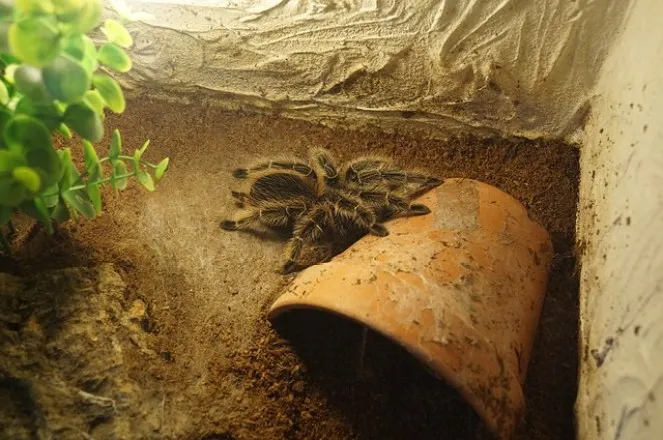
Temperature is best monitored using a thermometer. Most tarantulas thrive in temperatures between 70-85°F (21-29°C). Place the thermometer in the enclosure to accurately measure the temperature. You can use a heat mat or a heat lamp to maintain the desired temperature, but be careful not to overheat the enclosure. Ensure the heat source is placed on the side of the enclosure or above, not directly on the substrate, to prevent burns. Regularly check the temperature and adjust the heat source as needed. Consider your species, and what temperature it needs. Temperature management ensures a healthy habitat for the tarantula to live in.
Enclosure Decoration and Enrichment
Adding decorations to your tarantula’s enclosure not only enhances its aesthetic appeal, but also provides enrichment and encourages natural behaviors. Providing hiding places, climbing structures, and other elements creates a stimulating environment that can reduce stress and promote a healthier lifestyle. Avoid using anything that could be toxic or harm the tarantula. The key is to create a naturalistic and enriching environment. It also helps your tarantula feel safe and secure.
Hiding Places
Tarantulas are naturally secretive creatures that benefit from having hiding places in their enclosures. Cork bark, hollow logs, and artificial caves make excellent hiding spots. These features allow the tarantula to retreat when it feels threatened or when it wants to molt. Ensure that the hiding place is appropriately sized for the tarantula. Providing multiple hiding spots can also enhance the enrichment of the environment. Providing a safe place reduces the likelihood of stress. It also allows them to feel secure in their habitat.
Climbing Structures
Arboreal tarantulas will benefit from having climbing structures in their enclosures, such as branches and artificial plants. These structures allow them to climb and explore, mimicking their natural behavior. Terrestrial species can also benefit from small structures to add interest to their environment. Choose structures that are non-toxic and stable, so they do not pose a risk to the tarantula. Secure the structures to prevent them from falling. Climbing structures make the enclosure more interesting for the tarantula. It can also increase the amount of space they can utilize.
Water and Feeding
Providing water and food is essential for the survival and well-being of your tarantula. Clean water and a balanced diet are critical components of responsible tarantula care. Ensure the water source is always clean and accessible, and that the tarantula receives a nutritious diet. Provide fresh water and appropriate prey items. They must be able to find these resources in the enclosure to thrive.
Water Dish Requirements
Provide a shallow water dish that is accessible to your tarantula. The water dish should be small enough to prevent the tarantula from drowning, but large enough to provide adequate water. Always keep the water dish filled with fresh, clean water. Clean the water dish regularly to prevent the growth of bacteria and algae. A water dish is essential for maintaining hydration and humidity levels within the enclosure. Ensure the water dish is not too deep. It can be a source of water for drinking or molting.
Feeding Strategies
Tarantulas are carnivorous and primarily feed on insects. The appropriate feeding frequency depends on the age and size of the tarantula. Young tarantulas should be fed more often than adults. Feed your tarantula appropriately sized insects, such as crickets, mealworms, or roaches. Remove any uneaten prey within 24 hours to prevent them from stressing your tarantula. Avoid overfeeding, which can lead to health problems. Monitor the tarantula’s abdomen to see how much it has eaten. Feeding strategies involve understanding the specific nutritional needs of the tarantula. It also involves providing prey of the correct size. Feeding helps tarantulas develop and thrive.
Cleaning and Maintenance
Regular cleaning and maintenance are necessary to maintain a healthy and hygienic environment for your tarantula. Regular cleaning prevents the buildup of waste, mold, and bacteria, which can be harmful to the tarantula. Cleaning also involves removing any uneaten prey. A well-maintained enclosure is crucial for your tarantula’s overall health. It ensures a healthy habitat for the tarantula. Cleaning will help with odor.
Regular Cleaning Schedule
Develop a regular cleaning schedule to ensure the enclosure remains clean. Spot-clean the enclosure weekly by removing any uneaten prey, feces, and other debris. A full substrate change should be done every 6-12 months, or as needed. The frequency of cleaning will depend on the size of the enclosure and the amount of waste produced. Use appropriate cleaning solutions that are safe for tarantulas. Develop a system to ensure the proper cleaning and maintenance is performed. Remember to replace the water, and clean the enclosure regularly.
Waste Removal
Remove waste from the enclosure regularly to prevent the buildup of harmful bacteria. Use a small scoop or tongs to remove feces and other debris. Be careful not to disturb the substrate too much, especially if the tarantula has created burrows. Ensure that all waste is properly disposed of. Regularly remove waste to prevent bacterial growth and unhealthy conditions. If your tarantula is in the enclosure, wait for the tarantula to move away from the waste before starting. Make sure to dispose of the waste outside of the enclosure.
